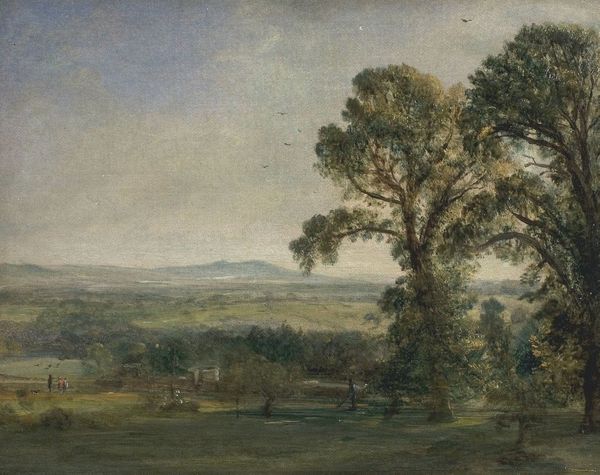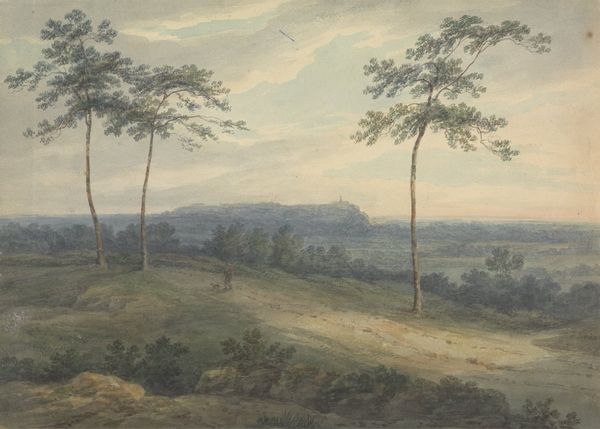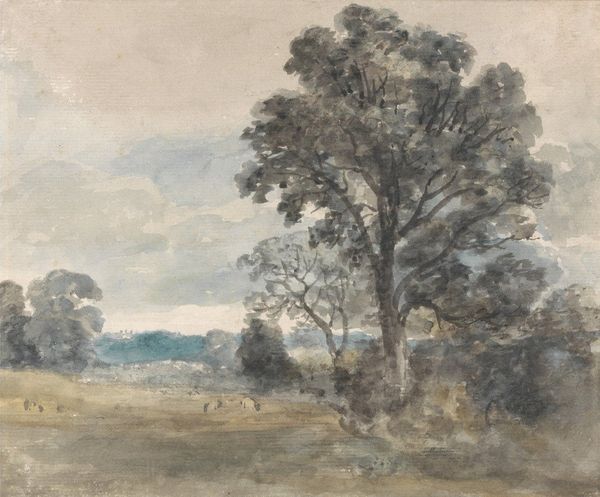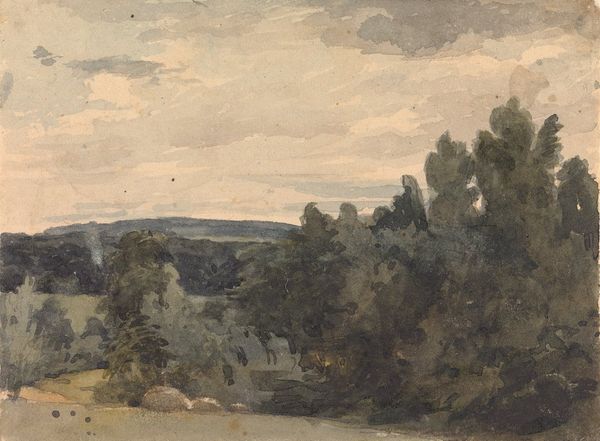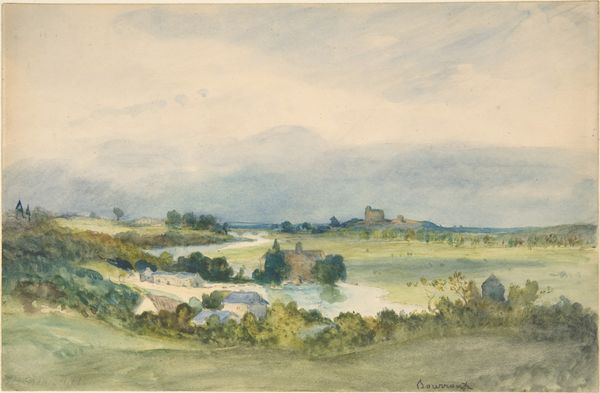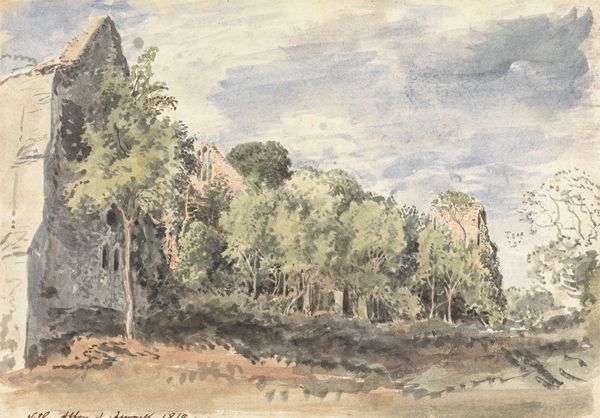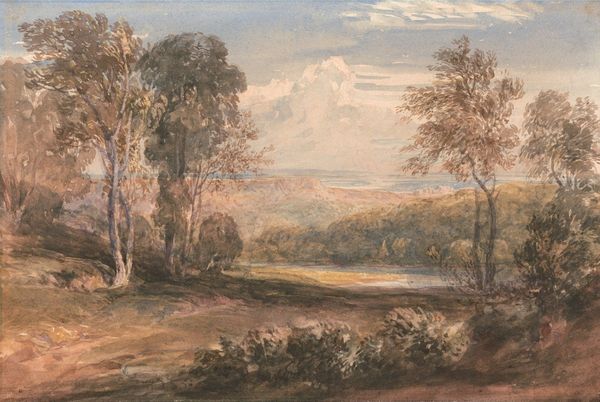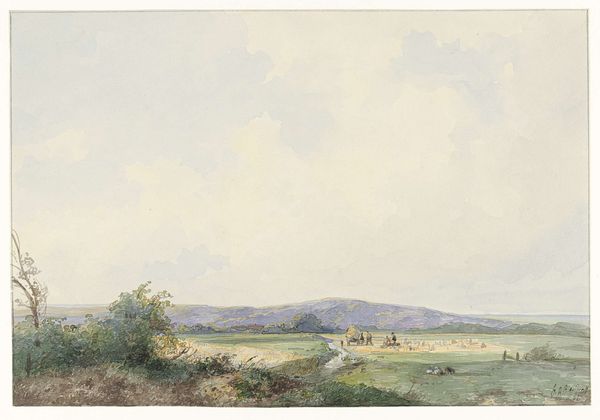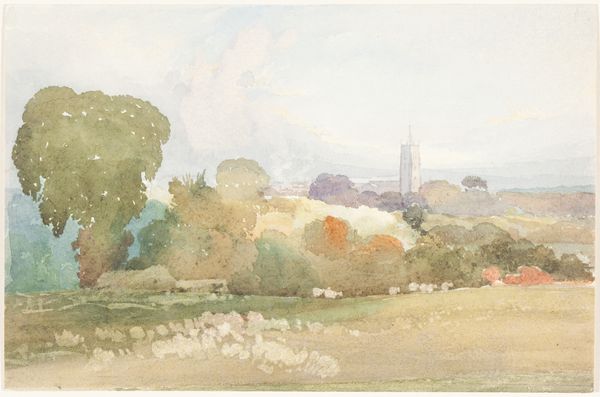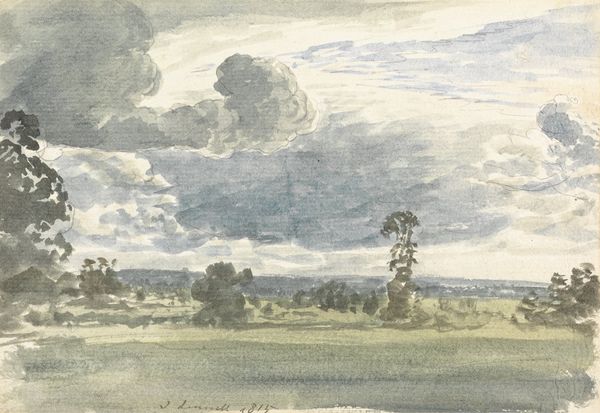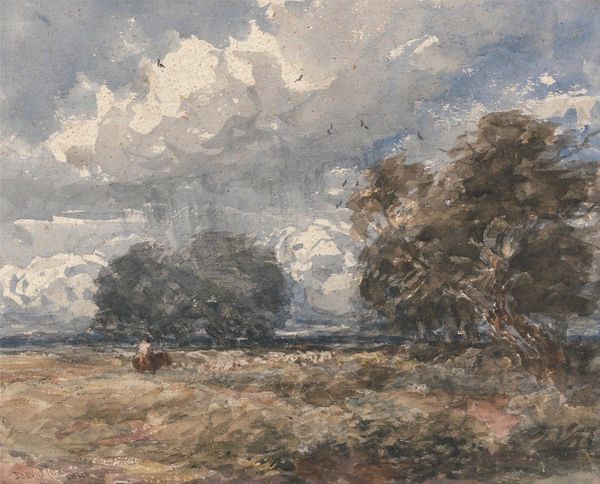
painting, plein-air, watercolor
#
painting
#
plein-air
#
landscape
#
watercolor
#
romanticism
#
watercolour illustration
#
watercolor
#
realism
Copyright: Public Domain: Artvee
Curator: This watercolor, titled "Suffolk Landscape," is attributed to John Constable. Although undated, it’s evocative of the works he created en plein air. Editor: My first impression is the sky; it's dominant and feels incredibly turbulent. There’s almost a pre-industrial anxiety to it, with the wispy, fragile watercolor application. Curator: Constable’s paintings have a key place in the development of British identity through the way the art market encouraged the desire for landscape painting in that period. This work could reflect broader socio-political concerns about land ownership and rural life. Editor: Look at the material reality, though: the humble watercolor washes on paper, probably done quickly and directly in response to the landscape itself. We see labor embodied not just in the painting's creation, but also represented with those sheep dotted on the field – a marker of agricultural practice. Curator: The "Suffolk Landscape" could also allude to the Romantic ideal of nature as sublime and untamed, yet in England, nature had been heavily managed for a long time already. It's fascinating how Constable toes the line. This image invites the viewer to romanticize what it is to be an Englishman at this historical moment, against the historical realities. Editor: And again we should consider those who truly engaged with this landscape: what agricultural techniques where dominant when Constable made this image, and how are they materialized in his composition? He has the means and social license to just capture what's in front of him, and in turn, market those visions of a bucolic fantasy to middle class collectors in London and elsewhere. The actual lives of the laborers barely seep through. Curator: This makes it quite important to read the images against the grain, to expose what could be perceived as the elitist approach. Editor: It speaks to art’s unique ability to obscure or reveal depending on the lens we use, be it about materials or social context.
Comments
No comments
Be the first to comment and join the conversation on the ultimate creative platform.
